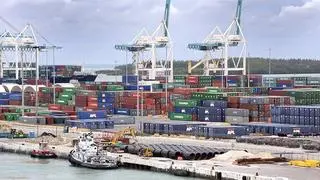The Textiles Ministry is planning to commission a study to analyse whether the Goods and Services Tax (GST) on textiles and apparels was creating an inverted duty structure hurting domestic production and if some changes were required.
“There have been complaints from the industry about GST rates for synthetic fibres giving rise to an inverted duty structure that made imports cheaper than domestic manufacture. The government has thus decided to appoint consultants to assess GST on the entire value chain of textile including peripheral activities,” a government official told BusinessLine .
At present, synthetic fibre is taxed at 18 per cent, yarn at 12 per cent and final output including garments at 5 per cent, which creates an inverted tax structure where rate on inputs is higher than that on output.
“The inverted duty structure is creating unfair competition between imports and domestic players and also hurts exporters. The government needs to do something soon to keep the industry from sinking as there is already a liquidity crunch in the market and the blockage of capital due to the inverted duty structure is leading to huge losses,” pointed out Sanjay Jain, former Chairman, Confederation of Indian Textiles Industries (CITI).
Task cut out
The consultants would be asked to map various GST rates on products covering entire value chain, understand existing incentives under GST and Customs and gather industry representations and demands made till date, as per the Request for Proposal (RFP) circulated by the Ministry of Textiles.
They would also have to study such taxes of other countries where in some cases some products are clubbed together while some others are exempted for making finished product competitive.
The consultants would also be required to make suggestions with respect to changes in existing rates, suggest new rates, find out if the taxes have affected the prices and thereby affected affordability for the buyer.
Recommendations regarding any change to the present tax and duty structure (including fiber neutrality), with proper justifications, that can be extended within the ambit of international norms and laws such as WTO have to be made, the RFP stated.
Inverted duty structure
Explaining how the inverted duty structure hurt domestic players, Jain explained that if people imported fabric, they only paid 5 per cent GST on it but if the same fabric is manufactured domestically, yarn has to be bought by paying 12 per cent and when fabric is made and sold, the GST is 5 per cent. So, the difference of 7 per cent is what pinches the domestic manufacturers.
Even for exports, if a manufacturer buys yarn at a GST of 12 per cent and sells garments at 5 per cent GST, then the refund is only of the 5 per cent, Jain said.
One can get refund of the inverted duty amount but it is a difficult process and the rules are such that they don’t allow refund of GST paid on services including job-work, he added.







Comments
Comments have to be in English, and in full sentences. They cannot be abusive or personal. Please abide by our community guidelines for posting your comments.
We have migrated to a new commenting platform. If you are already a registered user of TheHindu Businessline and logged in, you may continue to engage with our articles. If you do not have an account please register and login to post comments. Users can access their older comments by logging into their accounts on Vuukle.